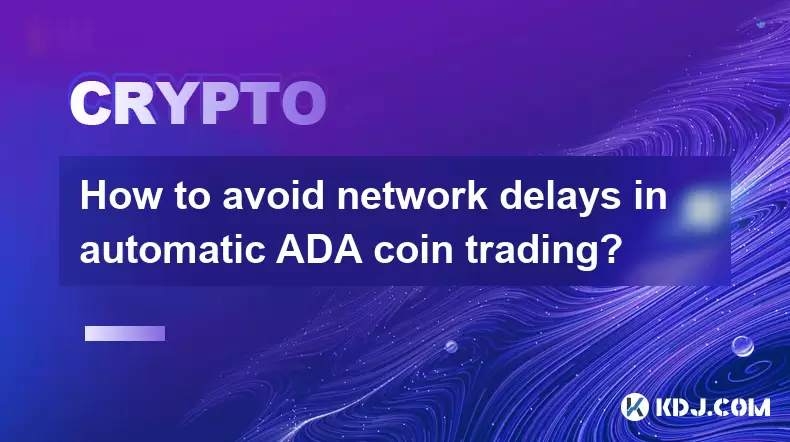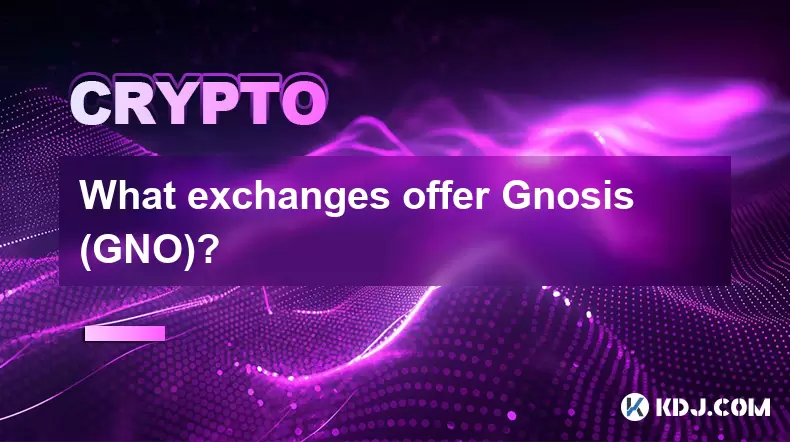-
 Bitcoin
Bitcoin $119000
-2.21% -
 Ethereum
Ethereum $4315
1.01% -
 XRP
XRP $3.151
-3.11% -
 Tether USDt
Tether USDt $0.0000
0.00% -
 BNB
BNB $808.5
-0.71% -
 Solana
Solana $175.8
-4.21% -
 USDC
USDC $0.9999
0.00% -
 Dogecoin
Dogecoin $0.2250
-3.92% -
 TRON
TRON $0.3469
1.77% -
 Cardano
Cardano $0.7818
-3.81% -
 Chainlink
Chainlink $21.47
-2.10% -
 Hyperliquid
Hyperliquid $43.30
-6.81% -
 Stellar
Stellar $0.4370
-2.84% -
 Sui
Sui $3.682
-4.40% -
 Bitcoin Cash
Bitcoin Cash $590.8
2.67% -
 Hedera
Hedera $0.2484
-5.20% -
 Ethena USDe
Ethena USDe $1.001
0.00% -
 Avalanche
Avalanche $23.10
-4.29% -
 Litecoin
Litecoin $119.2
-3.96% -
 Toncoin
Toncoin $3.409
0.90% -
 UNUS SED LEO
UNUS SED LEO $9.016
-1.29% -
 Shiba Inu
Shiba Inu $0.00001304
-3.82% -
 Uniswap
Uniswap $11.18
1.33% -
 Polkadot
Polkadot $3.913
-3.51% -
 Cronos
Cronos $0.1672
-3.08% -
 Dai
Dai $1.000
0.02% -
 Ethena
Ethena $0.7899
-4.70% -
 Bitget Token
Bitget Token $4.400
-1.23% -
 Pepe
Pepe $0.00001132
-5.93% -
 Monero
Monero $257.9
-6.44%
How to avoid network delays in automatic ADA coin trading?
Network delays in ADA trading can be minimized by choosing reliable platforms, optimizing fees, using advanced bots, and implementing robust strategies.
May 20, 2025 at 05:28 am

Introduction to ADA Coin Trading
ADA, the native cryptocurrency of the Cardano blockchain, is a popular asset among traders due to its potential for growth and the technological advancements of the Cardano network. Automatic trading of ADA involves using trading bots or algorithms to execute trades based on predefined criteria, which can be highly beneficial for maximizing profits and minimizing losses. However, one significant challenge that traders face is network delays, which can disrupt the timely execution of trades and affect overall trading performance.
Understanding Network Delays in Cryptocurrency Trading
Network delays in cryptocurrency trading refer to the time lag between the initiation of a trade and its actual execution on the blockchain. These delays can be caused by various factors, including high network congestion, slow transaction processing times, and issues with the trading platform itself. For automatic ADA trading, such delays can lead to missed opportunities or execution at less favorable prices, ultimately impacting the trader's bottom line.
Strategies to Minimize Network Delays
To effectively mitigate the impact of network delays on automatic ADA trading, traders can employ several strategies. These strategies focus on optimizing the trading setup, choosing the right platforms, and using advanced trading tools.
Selecting a Reliable Trading Platform
Choosing a reliable trading platform is crucial for minimizing network delays. Platforms that are well-maintained and have a robust infrastructure can handle high volumes of transactions more efficiently. When selecting a platform for ADA trading, consider the following factors:
- Reputation and user reviews: Look for platforms with positive feedback from other traders.
- Transaction speed: Check the average time it takes for transactions to be processed on the platform.
- Customer support: Ensure that the platform offers responsive customer support to address any issues promptly.
Optimizing Transaction Fees
Setting the right transaction fees can significantly impact the speed at which your ADA transactions are processed. Higher fees can incentivize miners to prioritize your transactions, reducing the likelihood of network delays. However, finding the right balance is essential to avoid unnecessary costs. Here are some tips for optimizing transaction fees:
- Monitor network congestion: Use tools like blockchain explorers to assess current network conditions and adjust your fees accordingly.
- Dynamic fee adjustment: Some trading bots allow for dynamic fee adjustment based on real-time network conditions, which can be highly effective in minimizing delays.
Utilizing Advanced Trading Bots
Advanced trading bots can play a crucial role in managing network delays. These bots can be programmed to execute trades at optimal times and adjust their strategies based on current market conditions. When choosing a trading bot for ADA, consider the following features:
- Real-time market analysis: Bots that can analyze market trends in real-time and adjust their strategies accordingly.
- Delay compensation mechanisms: Some bots have built-in features to compensate for network delays, such as executing trades in batches or using predictive algorithms.
- Customizable settings: The ability to fine-tune the bot's parameters to suit your specific trading strategy.
Implementing a Robust Trading Strategy
A well-designed trading strategy can help mitigate the impact of network delays. This involves setting clear entry and exit points, using stop-loss orders, and diversifying your trading portfolio. Here are some steps to implement a robust trading strategy:
- Define clear trading goals: Establish what you aim to achieve with your ADA trading, whether it's short-term gains or long-term investment.
- Set entry and exit points: Determine the price levels at which you will enter and exit trades, taking into account potential network delays.
- Use stop-loss orders: Implement stop-loss orders to limit potential losses due to unexpected delays or market movements.
- Diversify your portfolio: Spread your investments across different cryptocurrencies to reduce the impact of network delays on any single asset.
Monitoring and Adjusting Your Trading Setup
Continuous monitoring and adjustment of your trading setup are essential for managing network delays effectively. This involves regularly reviewing your trading performance, analyzing the impact of network delays, and making necessary adjustments to your strategy. Here are some steps to monitor and adjust your trading setup:
- Track transaction times: Keep a record of how long it takes for your ADA transactions to be processed and look for patterns or anomalies.
- Analyze trading performance: Use trading analytics tools to assess the impact of network delays on your overall performance.
- Adjust bot settings: Based on your analysis, fine-tune your trading bot's settings to better handle network delays.
- Stay informed: Keep up-to-date with the latest developments in the Cardano network and the broader cryptocurrency market, as these can impact network conditions.
Frequently Asked Questions
Q: Can network delays be completely eliminated in ADA trading?
A: While it's not possible to completely eliminate network delays, the strategies outlined above can significantly minimize their impact on your trading activities.
Q: How do network delays affect the profitability of ADA trading?
A: Network delays can lead to missed trading opportunities and execution at suboptimal prices, which can reduce overall profitability. By implementing the strategies discussed, traders can mitigate these effects.
Q: Are there specific times of day when network delays are more likely to occur?
A: Network delays can vary based on overall network congestion, which may be higher during peak trading hours. Monitoring network conditions and adjusting transaction fees accordingly can help manage these variations.
Q: What role does the Cardano network's scalability play in network delays?
A: The scalability of the Cardano network directly impacts network delays. As Cardano continues to improve its scalability through updates and upgrades, the potential for network delays may decrease, enhancing the efficiency of ADA trading.
Disclaimer:info@kdj.com
The information provided is not trading advice. kdj.com does not assume any responsibility for any investments made based on the information provided in this article. Cryptocurrencies are highly volatile and it is highly recommended that you invest with caution after thorough research!
If you believe that the content used on this website infringes your copyright, please contact us immediately (info@kdj.com) and we will delete it promptly.
- PumpFun (PUMP) Price: Riding the Meme Coin Wave or Facing a Wipeout?
- 2025-08-12 16:50:12
- Arctic Pablo Coin: Meme Coin Growth Redefined?
- 2025-08-12 16:50:12
- Ether ETFs Surge: Inflows and Bull Signs Point to $4K ETH?
- 2025-08-12 16:30:12
- Bitcoin, Crypto Market, and CPI Anticipation: A New York Minute on Volatility
- 2025-08-12 16:30:12
- Bitcoin, CPI, and Market Fears: Navigating the Crypto Landscape
- 2025-08-12 15:10:13
- BTC Traders Eye ETH Targets as CPI Looms: A New York Minute
- 2025-08-12 15:10:13
Related knowledge

How to purchase Aragon (ANT)?
Aug 09,2025 at 11:56pm
Understanding Aragon (ANT) and Its PurposeAragon (ANT) is a decentralized governance token that powers the Aragon Network, a platform built on the Eth...

Where to trade Band Protocol (BAND)?
Aug 10,2025 at 11:36pm
Understanding the Role of Private Keys in Cryptocurrency WalletsIn the world of cryptocurrency, a private key is one of the most critical components o...

What is the most secure way to buy Ocean Protocol (OCEAN)?
Aug 10,2025 at 01:01pm
Understanding Ocean Protocol (OCEAN) and Its EcosystemOcean Protocol (OCEAN) is a decentralized data exchange platform built on blockchain technology,...

Where can I buy UMA (UMA)?
Aug 07,2025 at 06:42pm
Understanding UMA and Its Role in Decentralized FinanceUMA (Universal Market Access) is an Ethereum-based decentralized finance (DeFi) protocol design...

What exchanges offer Gnosis (GNO)?
Aug 12,2025 at 12:42pm
Overview of Gnosis (GNO) and Its Role in the Crypto EcosystemGnosis (GNO) is a decentralized prediction market platform built on the Ethereum blockcha...

How to buy Storj (STORJ) tokens?
Aug 09,2025 at 07:28am
Understanding Storj (STORJ) and Its Role in Decentralized StorageStorj is a decentralized cloud storage platform that leverages blockchain technology ...

How to purchase Aragon (ANT)?
Aug 09,2025 at 11:56pm
Understanding Aragon (ANT) and Its PurposeAragon (ANT) is a decentralized governance token that powers the Aragon Network, a platform built on the Eth...

Where to trade Band Protocol (BAND)?
Aug 10,2025 at 11:36pm
Understanding the Role of Private Keys in Cryptocurrency WalletsIn the world of cryptocurrency, a private key is one of the most critical components o...

What is the most secure way to buy Ocean Protocol (OCEAN)?
Aug 10,2025 at 01:01pm
Understanding Ocean Protocol (OCEAN) and Its EcosystemOcean Protocol (OCEAN) is a decentralized data exchange platform built on blockchain technology,...

Where can I buy UMA (UMA)?
Aug 07,2025 at 06:42pm
Understanding UMA and Its Role in Decentralized FinanceUMA (Universal Market Access) is an Ethereum-based decentralized finance (DeFi) protocol design...

What exchanges offer Gnosis (GNO)?
Aug 12,2025 at 12:42pm
Overview of Gnosis (GNO) and Its Role in the Crypto EcosystemGnosis (GNO) is a decentralized prediction market platform built on the Ethereum blockcha...

How to buy Storj (STORJ) tokens?
Aug 09,2025 at 07:28am
Understanding Storj (STORJ) and Its Role in Decentralized StorageStorj is a decentralized cloud storage platform that leverages blockchain technology ...
See all articles

























































































